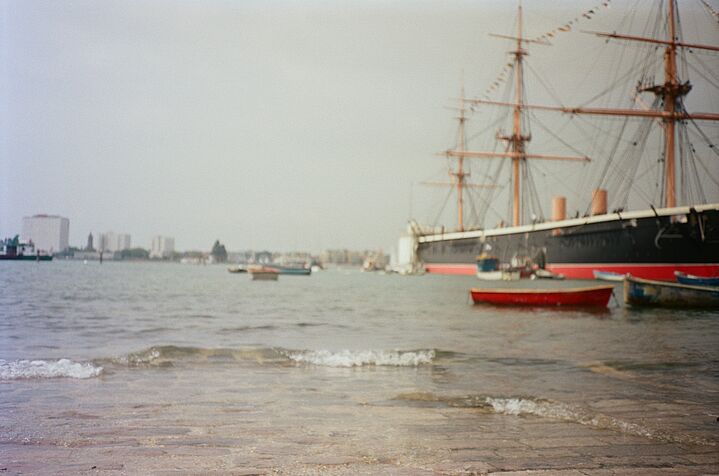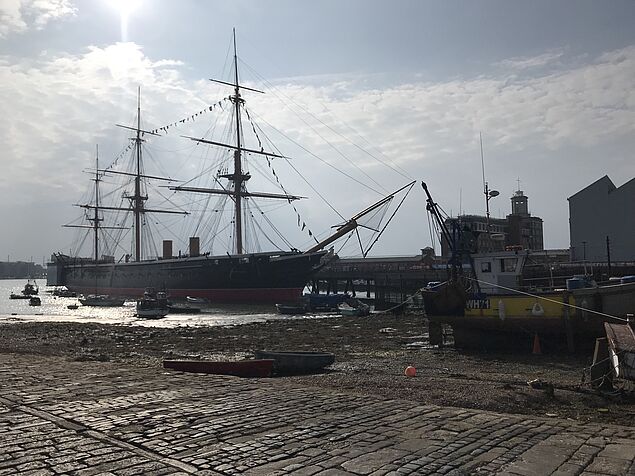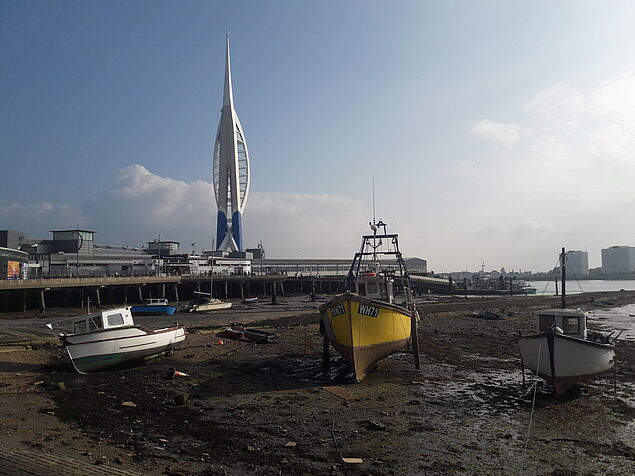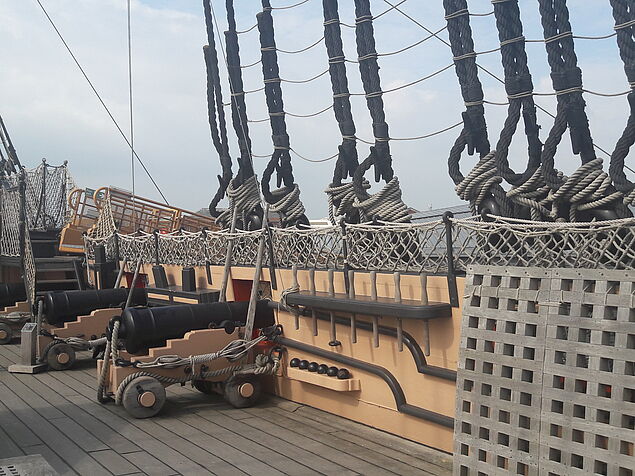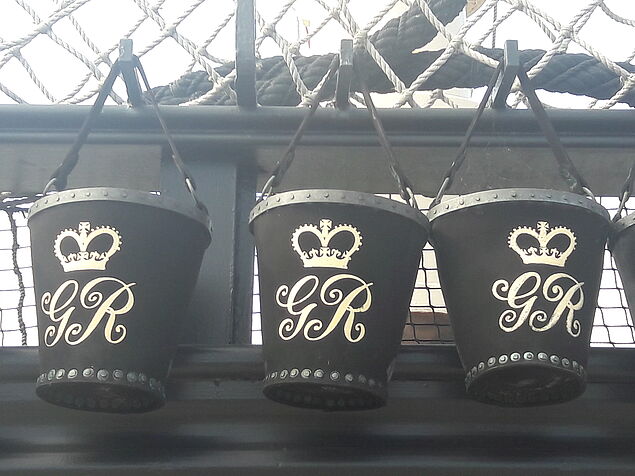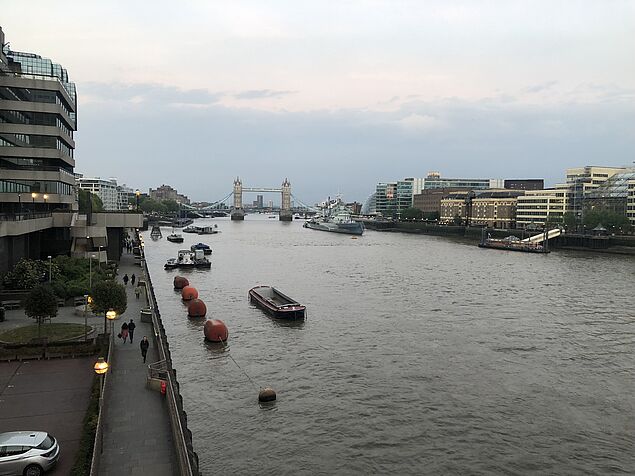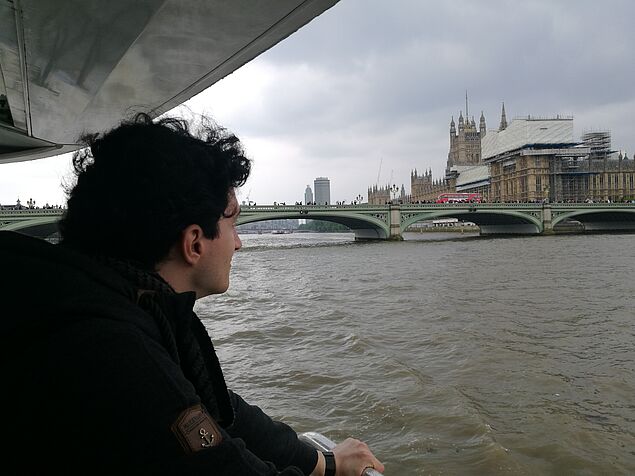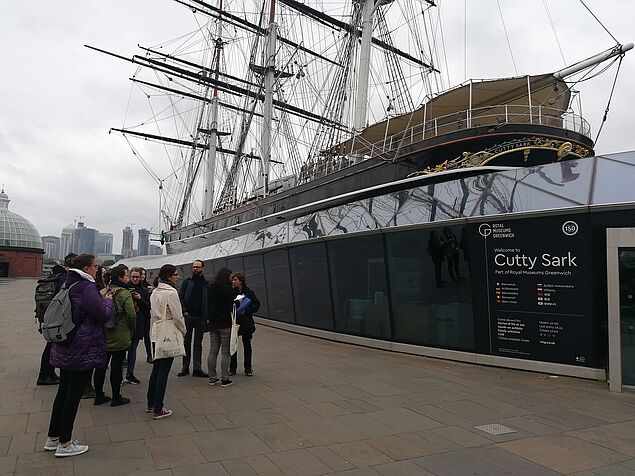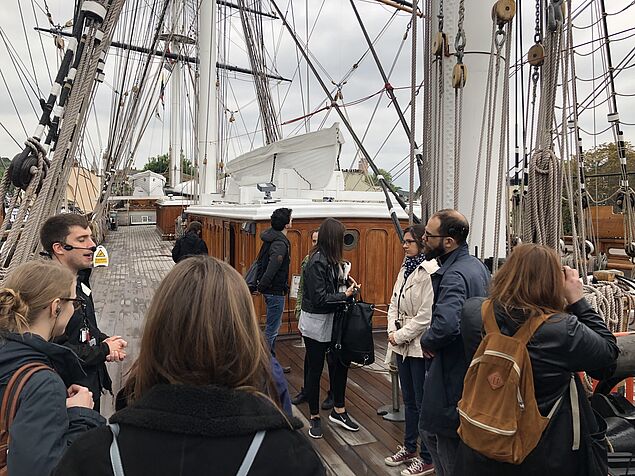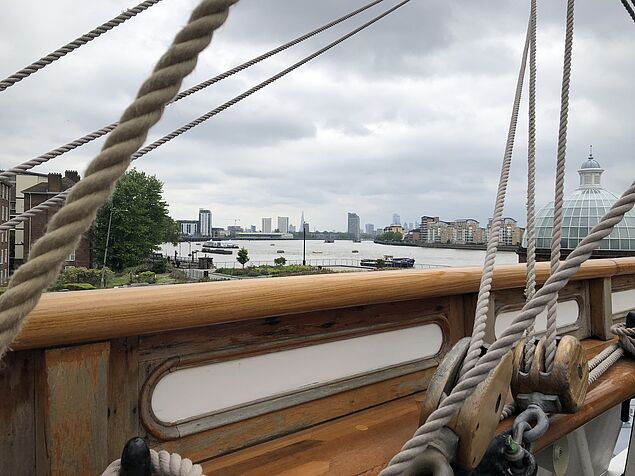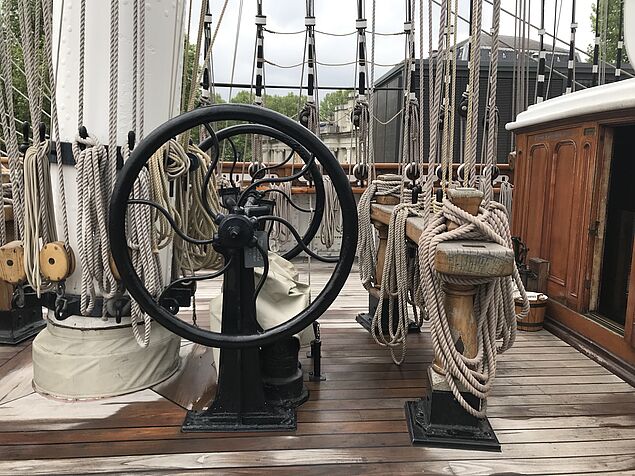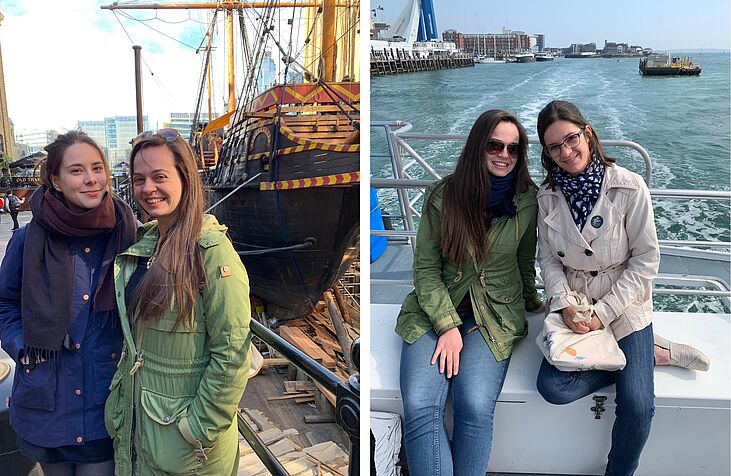All Hands on Deck for the Maritime Britain Excursion (16-19 May 2019)
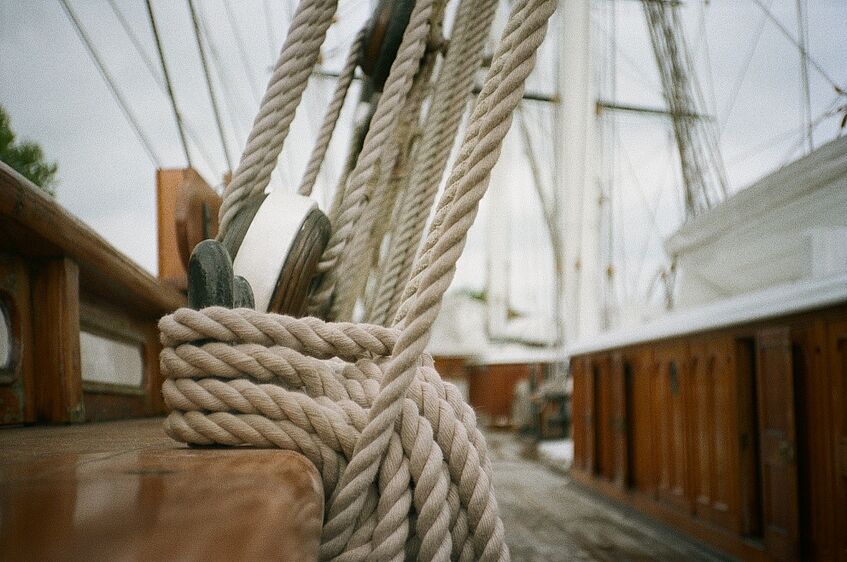
The Cutty Sark deck - picture by Ina Mangold
After last year’s Shakespearean excursion to London, this summer semester provided the opportunity for 12 students to join a maritime-themed trip to London, Greenwich and Portsmouth, UK. In the context of one of Sylvia Mieszkowski’s seminars, a 4-day programme took participants to some of the most famous museums and ships related to Britain’s maritime history. The whole matter was financed largely by money granted by the University of Vienna when Prof. Mieszkowski was appointed Professor for British Literature at the Department of English in 2017.
Opening our trip in London, we had the opportunity to view an outstanding National Theatre performance of an adaptation of Andrea Levy’s Small Island, a play made topical by 2018’s Windrush scandal, since it depicts the intertwined stories of four protagonists at the heart of the immigrant generation that came from Jamaica on board the SS Empire Windrush. Tatjana Bacovsky found this performance, which stunned us with its outstanding lighting arrangements, to be “the highlight of the trip. I would have never thought that Levy's novel would transfer so well, but the team at the National Theatre did a great job, the actors were amazing and the stage design was genius. Definitely an experience I hope to repeat in the future!”

The Small Island stage during intermission at the National Theatre – picture by Jana Jodlbauer
We then made our way to Greenwich’s rich museumscape, first touring the Cutty Sark, a British tea clipper built in 1869 and one of the last and fastest ships before sailing boats were ousted by steamers. It now sits in a custom-built dry dock and is entirely open to visit from hull to deck.
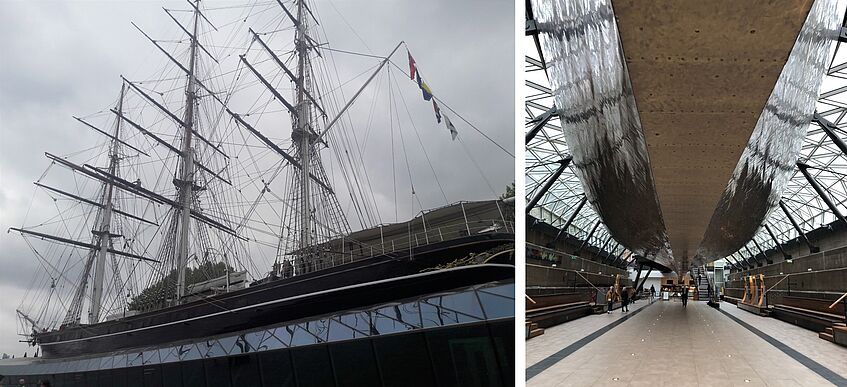
The Cutty Sark and its dry dock, and its brass clad underbelly – pictures by Manon Labrande and Esther Zitterl
We then dedicated some time to the Royal Museums, visiting the Royal Observatory and learning about its major role in the history of astronomy and navigation. Some watched the time ball drop, others marvelled over John Harrison's original maritime chronometers, and all took the time to pay a visit to the famous Greenwich Prime Meridian Line.
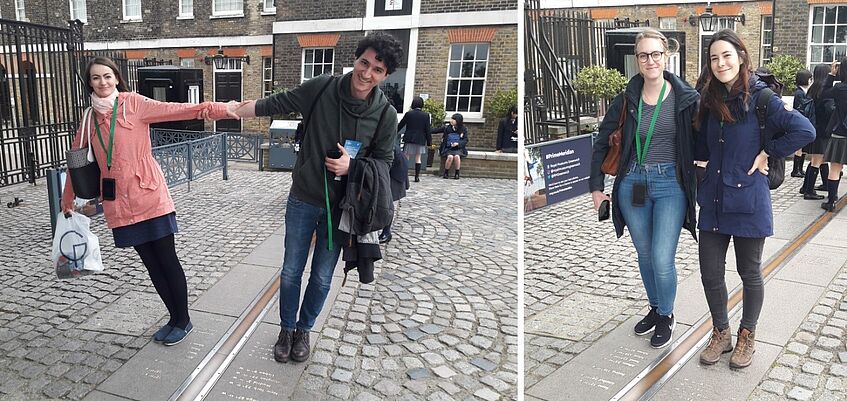
From left to right: Esther Zitterl, Nicola Ziggiotto, Tatjana Bacovsky and Helena Bacic standing over the Prime Meridian Line – pictures by Manon Labrande
The journey continued to the National Maritime Museum, home to a number of items bearing testimony to the Battle of Trafalgar: Lord Nelson’s own coat (complete with bullet hole and bloodstains), a piece of a Union Jack flag flown from the mast of one of the ships, J. M. W. Turner’s Battle of Trafalgar 1822 painting, and the famous 2012 artwork Nelson’s Ship in a Bottle by Yinka Shonibare MBE, in front of the building itself.

View of the London skyline from Greenwich Royal Observatory – picture by Manon Labrande
After a last look at the gorgeous view Greenwich offers of the London skyline, we ended our second day at the Museum of London Docklands with a very informative tour of its rich galleries tracing the story of the Docklands’ constant involvement in Britain’s commercial and social history. This afforded a glance at the dark underbelly of the UK’s wealth accumulated by oversea trade, since a sizeable part of the museum’s collection is devoted to documenting the history of the transatlantic slave trade.
Our “smooth sailing” excursion – to quote one of our participants Jana Jodlbauer – took us to Portsmouth the next day, giving us the chance to take a harbour tour on the sea and visit the traditional sailing town’s Historic Dockyard. We started our visits with the Mary Rose, Henry VIII's flagship; lost during the Battle of the Solent in 1545 and recovered in 1982. Years of a long process of conservation after one of the most complex rescue missions in maritime archaeology allowed for its truly awe-inspiring remnants to be preserved and put on display, along with numerous original artefacts.
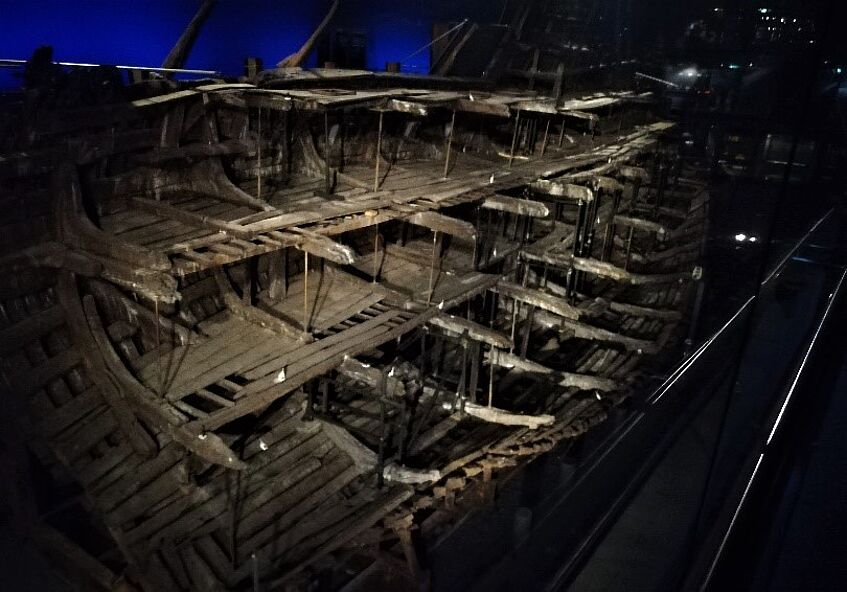
The Mary Rose's remaining side – picture by Nicola Ziggiotto
The end of the Mary Rose tour provided us with our first glimpse of the nearby HMS Victory, our next calling point. Known as Lord Nelson’s flagship in the Battle of Trafalgar in 1805, she is now a museum vessel and the world’s oldest naval ship still in commission, counting 241 years of service in 2019.
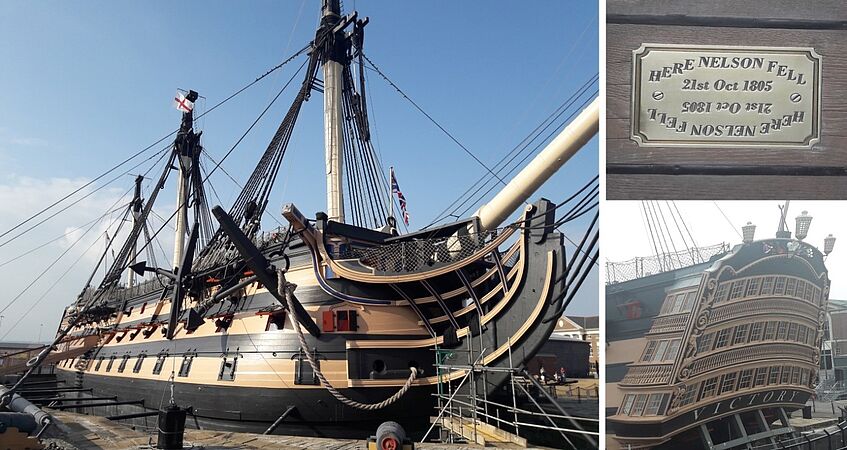
HMS Victory – pictures by Manon Labrande
The final day of our trip allowed us to visit the Tate Britain’s impressive collection, with a maritime-theme tour of its paintings and a particular focus on J. M. W. Turner. We finally wrapped up our excursion with a classic pub lunch, to bring the perfect London touch to, in Jana’s words, a “very educating, well organised and most importantly FUN trip!”
The final words will be those of our participants:
“Be sure to bring good walking shoes, Prof Mieszkowski means business!
The trip was so well-planned we didn't have to worry about anything. The team gave their all to ensure that we made the most of our time in London. A big shoutout to Manon and Prof Mieszkowski's team for organising tours that were tailored to our theme. We had a packed schedule and navigating the museums on our own might have been overwhelming, but this way we got the most out of the experience.” – Tatjana Bacovsky
“I really enjoyed the trip to London and Portsmouth!
Small Island at the National Theatre was an amazing, thought-provoking play, the Mary Rose was spectacular and the Tate Britain’s William Turner paintings are always worth a visit. Thanks for organizing this extraordinary trip!” – Frida Sagmeister
“Being able to see these historic artefacts and knowing their history, combined with their commemoration in British literature and art gave me a better understanding of the importance of the sea for British culture and identity.” – Ina Mangold
“Seeing what I had learned in the past years so clearly displayed before me […] gave me a sense of pride, not only towards my efforts, but for belonging to an institution that, despite its distance from Anglophone countries, actively radiates their knowledge and culture. The second [realisation], and more important one, was a whole new level of appreciation for our lecturer’s efforts, as it became clear to me that her commitment to providing us with accurate, lively, and well-structured classes is, for us students, nothing short of great luck.” – Nicola Ziggiotto
“It all went swimmingly!” – Jana Jodlbauer
“It was great, great fun. I am not sure how much I will remember about all the different papers I wrote and will write in the course of my studies, but I will definitely remember how much fun I had exploring London and Portsmouth with this lovely group. Together, we travelled back in time to board the Mary Rose, we followed Nelson’s steps on the HMS Victory, we crossed the prime meridian and we dived into British culture, literature and history – all under the skillful navigation of Manon Labrande and the command of Prof. Sylvia Mieszkowski.” – Esther Zitterl
“Twice I had tears in my eyes: once (again!), when confronted with John Harrison’s genius, embodied in his four beautiful clocks, which changed navigation forever; and once when I laid eyes on the Mary Rose for the first time. When the 500-year-old ship’s remaining side slowly emerged from the dark, it was truly sublime.” – Sylvia Mieszkowski
Manon Labrande

